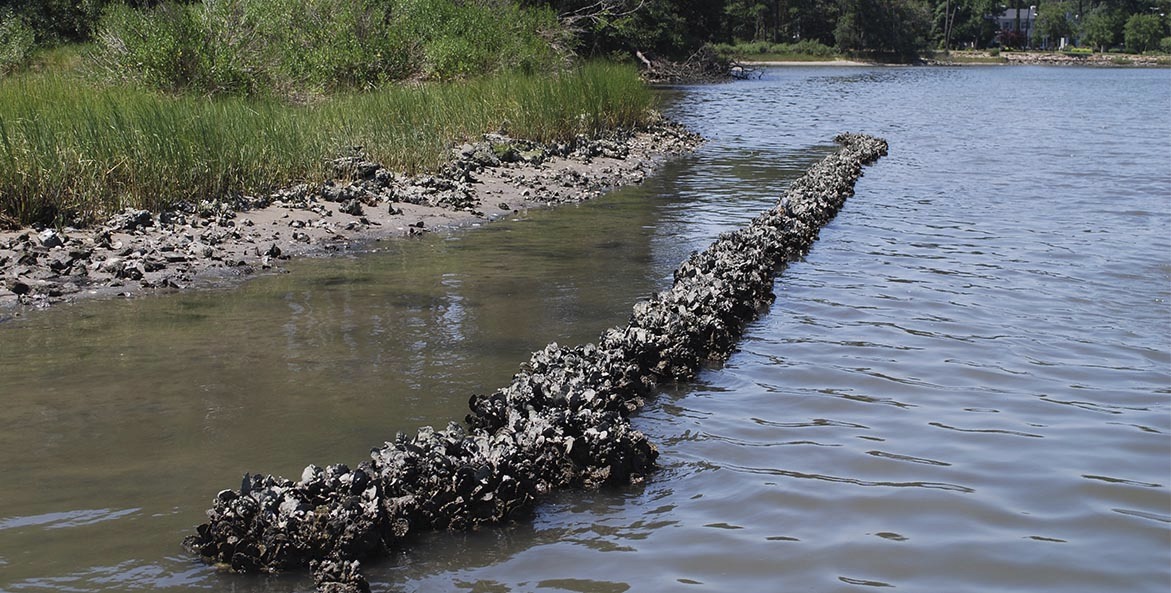If you have difficulty viewing the story map you can open it on our GIS website.
Oyster Restoration to Protect Nansemond River Shorelines

Exposed oyster reefs in Virginia's Elizabeth River serve as a breakwater to prevent shoreline erosion.
Dr. Lisa Drake
A pioneering partnership between the Nansemond River Preservation Alliance (NRPA) and Chesapeake Bay Foundation (CBF) deployed a variety of innovative oyster restoration techniques with the hope that these living shorelines will increase oyster populations and prevent erosion, among other benefits.
CBF Staff are now working with NRPA and Old Dominion University (ODU) to monitor the project sites to document oyster recruitment, growth, and changes to the shoreline over time. ODU plans to publish a scientific paper to document its research and findings in the future.
Nature can help mitigate the impacts of erosion and flooding that threaten many waterfront properties. These "living shorelines" are not new. Virginia passed legislation in 2020 making living shorelines the default option for protecting shorelines.
The organizations selected five sites and began installations in March 2021. This groundbreaking work was made possible by a grant from Suffolk-based Bleakhorn Foundation. Different materials were used to construct the oyster reefs and results have been monitored and evaluated to determine the most effective practices in the region. This laid the foundation for future shoreline oyster restoration work throughout Hampton Roads, Virginia.
Find out more about this incredible project in our interactive story map below.
Building shorelines using natural processes and materials can be less costly and more effective than hard shoreline protection such as riprap and bulkheads. They can also restore the historic benefits of natural buffers, which have been lost as oysters and wetlands in the region have dramatically declined. If waves first hit oyster reefs lining the shore, some of the force of the waves is absorbed before it can cause erosion. This helps with the resurgance of marsh grasses, which also buffer waves and lessen flooding. In addition, oyster reefs provide homes and food for fish, crabs, and other wildlife, and filter pollution that enters our waters. Ultimately, these efforts provide better opportunities for local watermen and cleaner water for citizens. You can learn more about the magic of oyster reefs in our video, The Incredible Oyster Reef.
As work proceeds on the projects, local volunteers will be able to help at events to build concrete oyster reef balls. If you are interested in volunteering for the project, go to the Nansemond River Preservation Alliance website and click on "Take Action."
Both NRPA and CBF are members of the Chesapeake Oyster Alliance, and their work on the Nansemond River in Suffolk will support the Alliance goal of adding 10 billion new oysters to the Bay by 2025.


